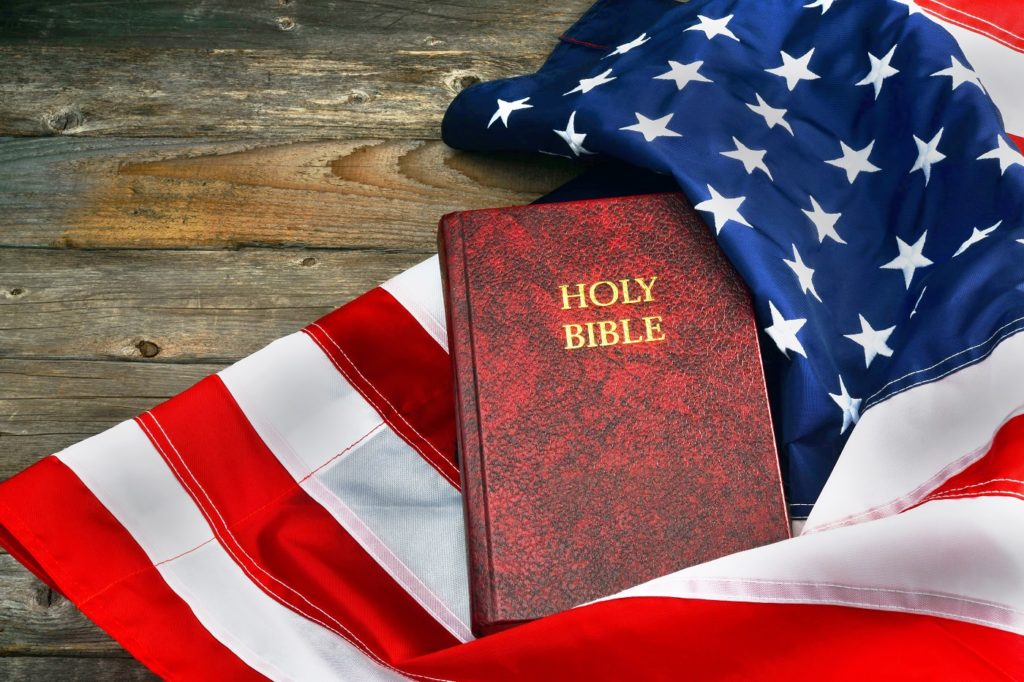For three decades, Justice Scalia’s infamous opinion in Employment Division v. Smith (1990) has consternated conservatives. In that case, the Supreme Court held that the First Amendment did not vest federal judges with the authority to craft exemptions from laws that apply generally to everyone and do not target religion. Smith instead tasked state and federal legislatures to create exemptions. This spawned years of scholarly and judicial attempts to chart a path forward. This task has become even more important in recent years, as state-level administrative states grow in power, quantity, and scope, threatening religious organizations’ freedom to serve their communities while vesting government decisionmakers with far-reaching authority.
Exemptions are important. Religious adoption agencies that are forced to follow a law that violates their beliefs, for example, have to choose between extinction of their values or extinction of their organization altogether. When organizations that serve our communities have to cease to be or cease to believe, the public loses the specialized and specific goods those organizations provide.
Thankfully, the glut of religious freedom jurisprudence over the last year-and-a-half may chart a path forward. In his dissenting opinion to the Supreme Court’s denial of the application for injunctive relief in Calvary Chapel Dayton Valley v. Sisolak, Justice Kavanaugh explicitly endorsed University of Virginia law professor Doug Laycock’s “most-favored nation status” approach to judicial questions concerning the free exercise of religion. In international multilateral treaty-making, a most-favored-nation clause requires one member of the World Trade Organization to accord to every other member the privileges that the member grants to its most-favored nation. The United States, for example, should treat any WTO member as well as it treats the United Kingdom—and vice versa. The First Amendment, then, would require an individual government decisionmaker to treat religious organizations as well as it treats its most-favored secular organization.
This conceptual framework has the potential to create broad protections for religious liberty, especially when combined with the broad language and far-reaching implications of the Court’s unanimous decision in Fulton v. City of Philadelphia. Kavanaugh’s dissent and the decision in Fulton seem to indicate that Chief Justice Roberts snuck in a workaround to the Smith rule in Fulton while still shepherding a unanimous decision.
Start your day with Public Discourse
Sign up and get our daily essays sent straight to your inbox.The glut of religious freedom jurisprudence over the last year-and-a-half may chart a path forward from Smith.
“Favored” Means “Exempt”
The central insight of Justice Kavanaugh is that to favor some organizations and to disfavor others is to exempt the former from some requirements and not exempt the latter from the same requirements. To say that something is “favored” inevitably means that it is “exempt.” Kavanaugh uses zoning laws an example, because they give certain requirements to certain organizations but do not give the same requirements to others. There, certain organizations are, in effect, “exempt” from the requirements from which organizations in other categories are not.
Justice Kavanaugh bases this First Amendment framework in the “system of individual exemptions” exception established in Smith. Under Smith, a law that requires a decisionmaker to make an “evaluation of the particular justification” for religious conduct triggers strict scrutiny. That means that the decision cannot force believers to violate their beliefs unless it does so in a way that is “narrowly tailored” to a compelling government reason. Government action that is generally applicable and neutral presumptively satisfies the First Amendment’s requirements for Free Exercise, but Justice Scalia’s Smith opinion also carved out the Exception for a system of individual exemptions.
In cases that “divvy up organizations into a favored or exempt category and a disfavored or non-exempt category,” Justice Kavanaugh argues, Smith and a previous case, Sherbert v. Verner, require judges to ask if the law creates a favored or exempt class of organizations and, if so, if religious organizations fall outside that class. As Justice Kavanaugh notes, this type of reasoning is defended by Justice Scalia’s reasoning in Smith concerning mechanisms for compensating unemployment. In Sherbert, Thomas, and Hobbie, regimes that required government bodies to determine on an individual basis whether religious reasons constituted “no fault” or “good cause” faced strict scrutiny. Any exemption policies created by that type of discretion in a government decisionmaker cannot be considered “neutral laws of general applicability.”
Those systems are problematic because the decisionmaker is imbued with power to decide which claims coming in for exceptions are due favor. The decisionmaker is given power to give favor to certain persons. In the unemployment compensation context, this usually concerned whether someone’s claim had “good cause.” In those situations, the decisionmaker had power to decide that medical or other secular reasons constituted good cause, whereas simple religious reasons could be not good cause. In other words, the decisionmaker had discretion to separate employees into two categories: disfavored and favored, based solely on the reason why they wanted to claim an exception.
That is why unemployment compensation systems are, for Justice Kavanaugh, the type of government action that should trigger a most-favored-nation approach. The most-favored-organization approach to Free Exercise would mean that, any time a decisionmaker has that power, that decisionmaker must grant religious exemptions alongside secular ones. Any religious exemption claimant must be favored as much as the “most-favored” secular exemption claimant. Otherwise, that would constitute discrimination based on the religious motivation of the claimant. A state government would need a compelling interest to disfavor religious organizations in that context.
Fulton’s Time-Bomb
Josh Blackman has noted the major weakness of Justice Kavanaugh’s approach: its seeming travel beyond the boundaries of Smith’s language. Blackman understands Justice Scalia to be making no “broad pronouncement about Free Exercise Clause jurisprudence” and to be speaking “about a specific aspect of unemployment compensation.” By Blackman’s writing earlier this year, the Supreme Court had not expanded the Exception to other contexts, but lower courts had on matters including police uniform policy, game/hunting code, university counseling referral system, and school board policies. Put simply, to Blackman, Justice Kavanaugh’s Most-Favored-Organization approach sounds good, but it is limited to unemployment compensation.
That is, it was limited, until Fulton v. Philadelphia, where the Court completely unbound Sherbert-Smith’s exception, endorsing the expansion to all contexts already undertaken by the lower courts. Just read the Court’s unlimited language:
The creation of a formal mechanism for granting exceptions renders a policy not generally applicable, regardless of whether any exceptions have been given, because it invites the government to decide which reasons for not complying with the policy are worthy of solicitude.
That’s any government mechanism—whatever exactly that will mean—not just an unemployment benefits system. In other words, when a state government official or body has the power to hand out exemptions, its decisions are likely going to have to be narrowly tailored to a compelling interest—a prohibitively high bar.
To this holding, and to the broad language therein, the Court’s liberal justices agreed. A 9-0 judgment, where the liberal wing joins the Chief in the majority opinion, may seem not likely to be a sweeping decision in favor of religious freedom. Indeed, it stands to reason that Justices Kagan, Breyer, and Sotomayor did not consider themselves to be joining onto a subversion of Smith. But Fulton says what it says. Any formal mechanism for granting mechanism triggers strict scrutiny. If Justice Kavanaugh’s contention that “favored” means “exempt” is correct, then the other justices have adopted a rule that could broadly undercut Smith’s rule. Put Fulton together with Justice Kavanaugh’s logic, and you have a jurisprudential time-bomb.
The principle was this: in unemployment compensation contexts, Smith demands that a government decisionmaker with exemption-granting power grant a religious claimant as much favor as the most-favored secular claimant. Fulton blows up this limitation and expands the context so that now the principle is this: in all contexts, any formal mechanism for granting exemptions or favor triggers strict scrutiny. If any state government policy formally creates even the potential to divvy up organizations into favored and disfavored organizations, then state governments will be required to treat religious organizations as favorably as the most-favored secular organization. This would greatly limit Smith.
Going forward, lower courts should completely adopt Justice Kavanaugh’s suggested Calvary Chapel approach through the language of Fulton.
Application in the Lower Courts
Going forward, lower courts should completely adopt Justice Kavanaugh’s suggested Calvary Chapel approach through the language of Fulton. That is, if lower courts are confused at how exactly to apply Fulton to their own cases, Justice Kavanaugh’s dissent may be a guiding light of specificity.
As he is wont to do, the Justice was certainly trying to give that very kind of guidance in his opinion, equipping judges with a two-step approach. Lower courts should ask whether a policy separates organizations into favored and disfavored categories for exemptions. If so, that obviously creates a “formal mechanism for granting exceptions,” rendering any such policy not generally applicable under Fulton. State governments would then need a compelling interest to refuse to treat religious organizations as Most-Favored Organizations under that policy.
For example, let’s apply Fulton to the Nevada regulations at issue in Calvary Chapel. The governor’s orders during the COVID-19 pandemic divvied up organizations into favored and disfavored organizations through differing population caps. Religious worship services were capped at a total population of fifty people, while a 50 percent cap applied to casinos, bars, and gyms. The policy is a formal mechanism allowing higher caps for certain secular organizations while forcing lower caps for certain religious organizations. Governor Sisolak certainly decided which reasons for less regulation were “worthy of solicitude”: economic ones. Religious reasons were not considered so worthy. This is the key point: even though Governor Sisolak’s system was not about “exemptions” in a hyper-literal sense, secular organizations were given exemptions from the strict fifty-person attendance cap levied against churches through the discretionary power of the governor’s office. The policy was a system of individualized exemptions under Fulton.
As administrative states grow at all levels of government and legislatures delegate policymaking to governors and executive agencies, religious organizations will continue to face state and local governments that place them in disfavored categories—including in ways devised intentionally to get around Fulton. Faith-based adoption agencies, hospitals, schools, and the like may face government policy that triggers Fulton’s protections. State action does not always look like a neutral, generally applicable public accommodation or employment laws. The pandemic showed us how executives may—quite literally—put religious organizations into disfavored categories. The City of Philadelphia’s actions against Catholic Social Services illustrated how a municipal authority can have power to “gerrymander” policy to disfavor religious organizations. State and local authorities often retain power to favor some organizations and disfavor others (think back to our Nevada example of a state legislature giving their governor discretion to decide population caps for organizations during a pandemic). Future claimants facing a state policy that forces them to cease to be or cease to believe should use Justice Kavanaugh’s Most-Favored-Organization approach through Fulton’s language. Favored means exempt, and any formal mechanism for granting exemptions—categorizing organizations as favored—will violate the First Amendment.













